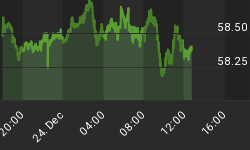It would be an understatement to call the current thinking of the economic commentariat confused. For this lot consumer spending drives the economy. Therefore it follows that the subprime mortgage crisis will hit consumer spending and then spread to manufacturing resulting in a full-blown recession. (This is not good news -- unless your name is Nancy Pelosi or Harry Reid). Fortunately the subprime fiasco is not a threat to the US economy. It is nothing more than a symptom of the Fed's loose monetary policy. Without credit expansion these loans would never have been made.
This situation brings to mind 1929 when corporations found themselves awash in cash -- thanks to the previous monetary injections -- which they then lent to the stock market, thereby further fuelling the boom in shares. (Benjamin M. Anderson Economics and the Public Welfare, LibertyPress, 1979, pp. 337-79). The Fed's monetary policy also triggered an estate boom which started in Florida and led to an almighty crash in 1926. Oddly enough this crash did not send the economy diving into recession. And it certainly did not cripple consumer spending.
What the above demonstrates is that current economic commentary contains very little economics and certainly no historical perspective. Come to think of it, this lot don't seem to have any perspective at all. Only about 14 per cent of mortgages are subprime, of these less than 2 per cent are in trouble. Scarcely what one could call a crash. The first quarter of this year saw about a $7 billion increase in foreclosures. This has to be seen in the context of a $13 trillion economy. If we take into account total spending then we would be looking at something like $28 trillion. It's absurd to think that subprime foreclosures would sink the economy. Just think Florida 1926.
As always, our economic soothsayers, psychics, seers, etc., are looking at the wrong end of the economy. Because they think GDP measures economic activity they conclude that consumer spending is what drives the economy. Furthermore, because investment is seen as derived from consumer demand then consumption must drive investment. Presto! The greater the amount of consumption the greater the amount of investment spending. This is truly horrible thinking that does not deserve to be called economic.
During the last recession consumer spending kept on increasing even as manufacturing kept on sinking. It still has not dawned on the economic commentariat that this fact discredits their view that consumption is the real engine of economic growth. And right now manufacturing is still booming.
The increase in manufacturing output during the last 3 months gave an annual growth figure of about 3 per cent, with all sectors still expanding. This has led some commentators to opine that manufacturing has probably never been stronger and will continue to grow. This view seems to be supported by manufacturing's record output, profits and sales. An interesting little fact that might have some significance is that 55 per cent of imports consisted of producer goods, including components.
Figures from the Institute for Supply Management's manufacturing index, which reflects the opinions of purchasing managers at factories, plants and utilities paints a somewhat different picture. The index stood at 56.0 in June but fell to 53.8 in July. (Anything above 50 indicates expansion). This 2.2 drop is nothing to panic about and only represents one month.
However, to deduce from any of these figures that manufacturing is just dandy would be a grave mistake. The same thing could have been said -- and probably was -- about US manufacturing in August 1928. In other words, statistics need to be interpreted. Let us take a look at the imports of capital goods. One cannot tell whether this is good or bad. For instance, in the absence of loose monetary policies that change the pattern of international trade by distorting prices the composition of these imports might have been very different. Moreover, there might very well have been fewer such imports with the difference being made up by domestic production. This is a thought that has completely eluded the economic commentariat.
The possibility that an overvalued dollar leading to massive imports may very well have helped stimulate US manufacturing and delay its contraction is another thought that finds itself in the wilderness. Take Japan, for example. The Fed prints dollars that are then exchanged for Japanese capital goods (producer goods). The Japanese exporters then use the dollars to buy US assets. In plain language, US assets are exchanged for Japanese savings.
This is what one might call the upside. The downside is that an overvalued dollar distorts the structure of international prices. What this means is that though the US is importing producer goods (foreign savings) its monetary policy is still distorting its capital structure, leading to the possibility that despite imports of producer goods (including components) the capital structure is not only smaller than it would otherwise be it has also taken an unsustainable shape. This results in what used to be "disproportionalities". Only a recession can restore the structure to a shape that corresponds to the true state of demand for capital goods and consumer goods.
In the meantime, the US economy will continue its present course. The rest is really up to the Fed's monetary policy.
















